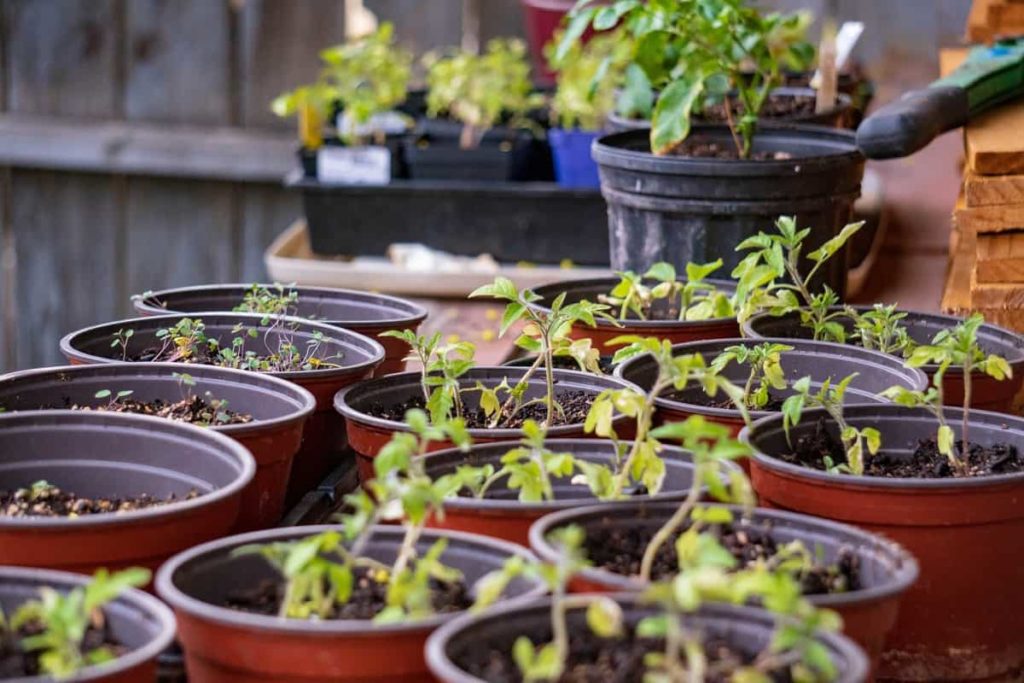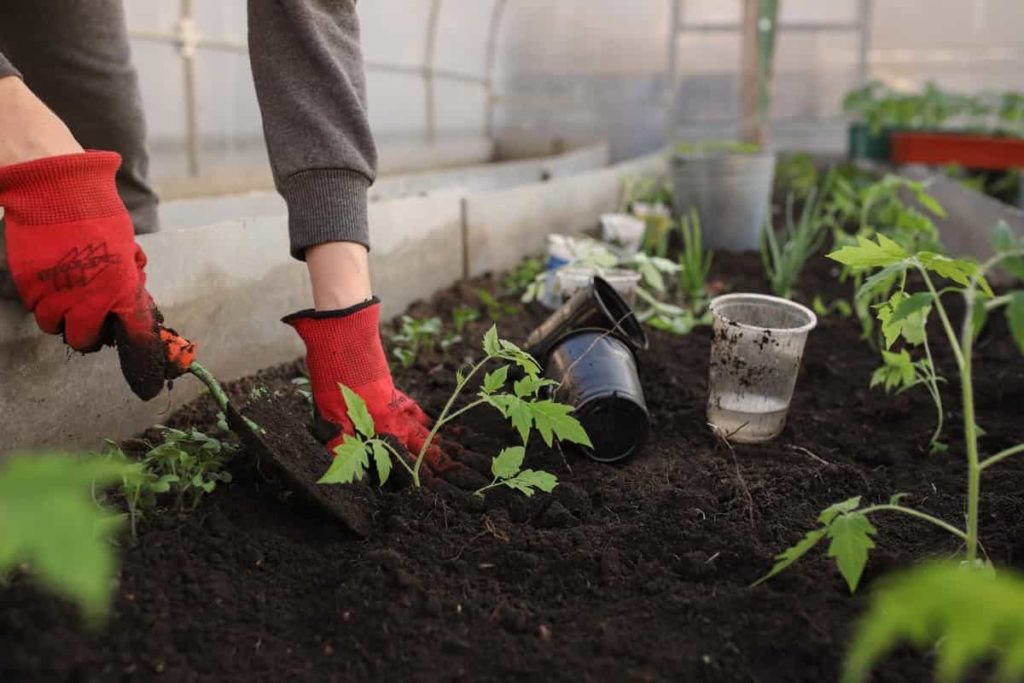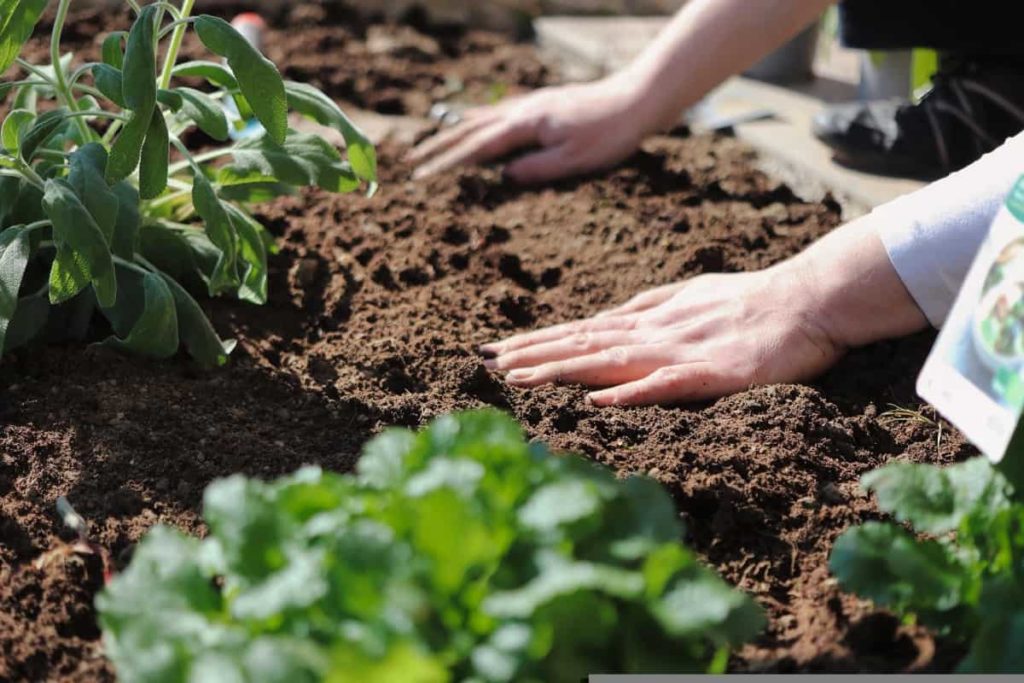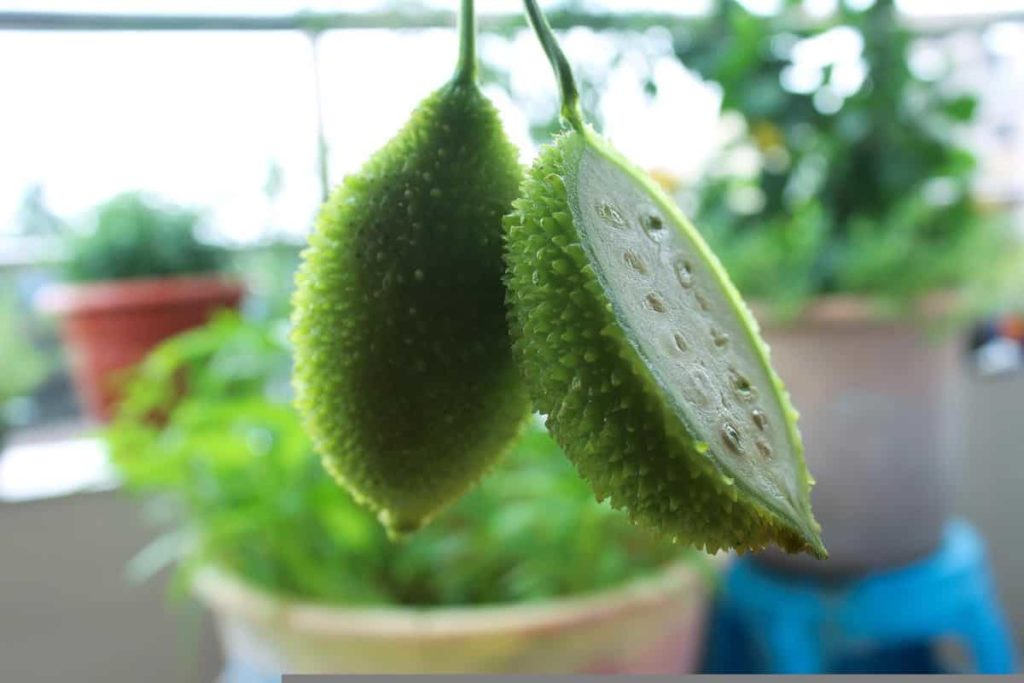Increasingly, terrace gardening is becoming a new trend in India. However, finding a place to grow your garden could be challenging in our concrete world. This suggests that those who like gardening in urban areas may be unable to do it. And here is where terrace gardening comes in. Your rooftop can be transformed into a terrace garden with all those gorgeous flowering plants and fresh organic veggies and fruits. Here’s how to start a terrace garden from scratch in Kolkata/West Bengal below.

Having a garden on your terrace can bring you both happiness and wealth. Terrace gardening is a great way to improve the appearance of your home while also providing you with a garden free of pesticides. Terrace gardening is getting widely popular in major cities of India, and one among them is Kolkata. Many areas in Kolkata, such as Alipore, Bhowanipore, Park street, and Ballygunge, are getting into terrace gardening due to lack of space.
Below we learn the advantages and disadvantages of terrace gardens, terrace garden setup cost, terrace garden requirements in Kolkata, how to maintain a terrace garden in Kolkata, how to make a terrace garden at home in Kolkata, and how to produce various herbs, fruits, flowers, and vegetables at home on Kolkata terraces.
Advantages of terrace garden
As you have your terrace garden, you will always have access to your garden whenever you like. The act of gardening itself is an excellent kind of exercise. Maintaining a healthy and active lifestyle will be facilitated by your work to maintain your garden in perfect condition. You can keep your body busy without resorting to boring exercise routines by caring for your plants, giving them water, and doing other things.
You can use the peels from fruits and vegetables to generate your compost at home. Naturally, it is possible to produce nutrient-dense food by amending the soil with organic manure and compost. This practice will also help reduce the amount of food that is lost or wasted. Planting a garden at your house can help the environment and reduce the carbon dioxide emissions you produce. The plants will contribute to an improvement in air quality.
When farming is done using chemical chemicals, the soil quality is diminished, and air and water are polluted. Your house will stay cooler thanks to the terrace garden, making it an excellent choice for those who live in hotter regions. The presence of all the plants creates a little ecosystem that will make the area seem cooler. You gain from eating home-grown food and save the hefty expenditures of operating an air conditioner.
Nothing beats a daily supply of homegrown fruits and vegetables. Your terrace garden will give you a range of organic vegetables and fruits, which are superior to those acquired from supermarkets in terms of nutrient density and overall health benefits. Growing some of your food is one way to ensure that the food you consume regularly is of good quality.
In case you missed it: How to Start a Terrace Garden From Scratch in Chennai/Tamil Nadu: For Growing Vegetables, Flowers, Fruits, and Herbs

Disadvantages of terrace garden
Terrace gardens can pose several structural and weight issues for a building. Your terrace garden’s structure will significantly affect the weight of your plants, whether they are grown in soil or pots. Terrace slabs and furniture increase roof weight. Once the roof is strengthened, the terrace garden can be installed. Plants and seedlings in high-roof gardens can suffer wind damage in the early stages of development.
Terrace garden houses are more expensive to insure. Thus, insurance companies will demand higher rates to cover them. It is more expensive to insure a terrace garden than a traditional backyard paradise. They’re more likely to fall from a rooftop garden. Thus, they’re more dangerous. Keep your roof garden fenced to protect visiting or invited children.
A barrier between the soil and the building’s rooftop is necessary before planting in a rooftop garden with soil beds. You’ll need a lot of money for this membrane to be installed. Metal nails and screws, and the use of garden tools, can cause roof garden membranes to degrade over time. Water and soil can leak into the construction of a building if a membrane ruptures. A building with a rooftop garden puts its water supply under extra strain.
If your roof does not have a water outlet, you can install a roof garden or utilize the building’s water supply. In contrast to conventional ground gardens, roof gardens need a specific drainage system that is both time-consuming and expensive to install. Roof gardens can only be created on flat surfaces. As a result of this design, no water from outside the garden will be let in. Drainage must be installed to prevent water from leaking onto the building’s outside.
A step-by-step guide on how to start a terrace garden from scratch in Kolkata/West Bengal
Plan your terrace garden
Before you put your gardening skills to use, you should first sketch up a general plan for the garden on your terrace. Plan exactly how you want to grow the greens in your terrace garden and make a strategy for doing so. They will look fantastic regardless of whether you plant them in pots, raised beds, or the vertical space on your patio, so don’t worry about that.
Establish a sitting area in the heart of your garden so you can get fresh air and sunshine daily. You might make the most of the available space using vertical planters, trellises, raised beds, and containers.
Choose a proper site on your terrace
Choose an appropriate location for the terrace garden, preferably with access to an adequate amount of sunshine and water. All the apartments in multi-story townships cannot reach the building’s rooftop. Because of this, we are growing fruits and vegetables in containers, and pots are the only viable option. The use of containers for growing plants is known as container gardening. As a result, plant pots can be maintained on the window sills and the verandah.
In case you missed it: How to Start a Terrace Garden From Scratch in Hyderabad: For Vegetables, Flowers, Herbs, and Fruits

Terrace garden setup cost
Rs 10,000 to Rs 15,000 is all needed to get started on a 500-square-foot terrace garden. Homemade compost can be used as a substitute for expensive fertilizers. One can grow up to a dozen vegetables, five different flowers, and a similar number of medicinal plants in this area. Waterproof your terrace. If you want to add soil patches and raised beds, you will need to waterproof your terrace area. This will prevent the building from suffering any possible harm or leaking.
The process of waterproofing is simple and only has to be done once. Waterproofing a terrace garden is an essential aspect of the building process. Managing leaks and roof damage is like building a house’s foundation before construction. This is done because dealing with these issues can be difficult. While there are several ways to waterproof a concrete slab, one of the most frequent is to use a polymer coating.
Choose the containers for your terrace garden
The Kolkata market is stocked with a diverse selection of various shapes and sizes of containers. However, to plant an organic garden on your terrace, you must eliminate any plastic containers you already have. Clay pots and cloth grow bags are also options for those interested in maintaining an organic garden. But in modern times, cloth grows bags are highly advised for your patio since using these pots will significantly lessen your effort.
Drainage holes aren’t an issue. Grow bags made of fabric are constructed to allow excess water to drain from the potting mix. Fabric bags self-prune, so there’s no need for pruning scissors. Fabric grows bags are long-lasting, waterproof, resistant to ultraviolet light and heat, and can withstand high temperatures.
You will need very little space to plant a garden in your yard. Beautify your garden. These grow bags contribute to the nutrient lock, which helps plant roots develop more effectively. Root rot and soil loss from potting should be avoided at all costs. There is no need to make use of gravel or sacks. You’ll need a lot of money and time to get the most out of these fabric pots. In any other case, earthen or clay pots are acceptable alternatives.
Prepare the soil for planting your terrace garden
A healthy soil environment is ideal for plant growth. The soil must be sufficiently mineral-rich, fed, and conditioned to support the growth of healthy plants. It is possible to create your potting mixture by combining soil and organic compost. The soil in the garden should not be too compacted, nor should it be very loose. Soil texture and water retention should be balanced. It is of the utmost importance to consistently provide organic compost to your soil.
The rains might wash away the essential nutrients, making fertilization necessary for a good harvest. Steer clear of chemical fertilizers since they might go into your body and wipe out the healthy bacteria and germs in the soil. To create your potting mix, combine red sand, coco peat, and organic compost in a ratio of one part each. Before putting the mixture in pots, let it at least a week and preferably two to settle first. Make sure the texture of the potting mix is well-balanced. Maintaining the soil’s vitality requires the consistent application of fertilizer.
Plant your terrace garden
Styrofoam packing peanuts or shards of shattered terra-cotta pots can be used to fill up the bottom half of tall pots that have shallow roots. This promotes drainage and prevents sogginess. Start planting in the center or with the largest plant and fill in as needed to maintain the soil level at or just below the container rim.
Water your terrace garden
The essence of life can be found in water. Water is essential to human beings’ and plants’ growth and health. The optimal time to water plants is either early or late at night. These times are ideal because they coincide with the time of day when the sun is at its maximum, allowing water to reach the plant’s roots without being lost to evaporation.
In case you missed it: How to Start a Terrace Garden from Scratch in Mumbai: A Step-By-Step Guide for Beginners

Always water your plants first in the morning to stimulate their natural development cycle and get the most out of your garden. At this point in the day, plants are positioned to take in a large quantity of water, which is essential since maintaining enough hydration allows them to survive the day. It is best to water the garden before 10 in the morning since doing so facilitates more excellent water absorption into the soil.
On clear days when the sun is strongest, it’s better to avoid midday watering. It is best to avoid watering plants during the hottest parts of the day to avoid stunting their development. If you hydrate your crops later in the day, do it while the sun is lower. This will help plants take up water before nightfall and not influence their growth. When you water at this time, you prevent water from being lost to evaporation.
Even in the summer heat, you can always give your plants a drink of water in the evening. Kolkata summer needs twice-daily watering (morning and evening) for many terrace-grown, sun-loving veggies and outdoor blooming plants, especially in April and May. You may want to think about using containers that water themselves. It is essential to remember that the leaves need to be allowed to dry out before night falls since moist leaves are an excellent opportunity for fungus.
Maintain an even moisture level for the plants. Do not water your plants very often with very little water. It is best to water plants rarely but thoroughly when you do water them. Maintaining a dry environment for the leaves is essential since moist leaves are a breeding ground for disease. The provision of adequate watering is of the utmost significance. Make sure that the water gets down to the roots of the plant.
Remember that the water will make its way into the soil slowly and steadily. Therefore, provide a substantial amount of water at regular intervals. Always water the space surrounding the plant, and ensure it is distributed evenly over the whole area. Drip or sprinkler watering is a very effective method for watering plants. You can utilize an autonomous watering system with a moisture sensor on the grass, the balcony, or the bed.
The roots will be damaged if the soil becomes saturated with water. Therefore, preventing the accumulation of water. Please make use of soil that is good quality and has a good quantity of both sand and clay in it. Use suitable watering devices such as a watering can, hose, spray, etc.
Pest and disease management for your terrace garden
Neem oil is one of the most potent organic pesticides used on plants. It is known to be effective against more than two hundred different types of insects that feed by chewing or sucking, such as aphids, mealybugs, and whiteflies. It is safe, leaves no harmful soil or foliage residue, and effectively eliminates or controls pests. In addition to that, it is an efficient anti-fungal treatment. Thus it can help prevent the development of powdery mildew.
What makes neem oil so effective is a component called azadirachtin, which can be found in the seeds of the neem plant. Another useful organic insecticide that helps target caterpillars, aphids, and worms are tobacco. Tobacco can be found in cigarettes and cigars. On the other hand, it must be used on peppers, tomatoes, or eggplants. Combine about one cup of tobacco with four liters of water, and then let the mixture soak for a full day in the water.
Put this solution in warm or direct sunlight to activate the ingredients. The color of the solution will be similar to that of light tea. After thoroughly shaking the solution, spray it all over the plants until they are completely soaked.
Orange peel is a wonderful bug repellent. Orange peel tea can be made by bringing the peel of one orange to a boil in about two cups of water, then letting the mixture soak for around twenty-four hours. After straining the solution, use it to water the plant well. Orange peel effectively removes pests with soft bodies, such as slugs, aphids, fungus gnats, and mealy bugs.
Make a paste out of one garlic clove and one around the medium-sized onion. Mix in about 1 liter of water this mixture. Allow it to rest for about one hour. After that, put in one teaspoon of dried red chili powder and combine everything well. This solution can now be sprayed on the plants. You also have the option of chopping up ten to twelve garlic cloves, adding them to one liter of water, and then straining the mixture.
Combine all of the ingredients and set aside for two days. Your plants will be protected against mealy bugs, aphids, and other parasitic pests by regularly applying this solution to them and spraying it on them. You should get started on the treatment as soon as you see evidence of an infestation. There is a greater risk of removing diseased areas of a plant or applying chemical fertilizers if the infestation spreads, making it more challenging to get rid of them.
In case you missed it: How to Start a Terrace Garden from Scratch in Bangalore/Karnataka: for Vegetables, Flowers, Herbs, and Fruits

Wait a few hours after spraying the solution on a plant to guarantee it won’t hurt. If the sprayed area has been wilted, burned, or changed color, the spray should be diluted and the process repeated. If the plant is still negatively impacted, you should try another recipe. Bugs hide beneath leaves, so don’t forget to put the solution there. On rainy days, you should avoid spraying since the rain will either wash away the treatment or dilute it.
It’s best to use this solution at dusk or later to avoid burning the foliage. Be careful not to spray too heavily. Spray the area once every several days and monitor the development. The effects of organic insecticides won’t be immediate. Because this is a gradual continuing procedure, you will need to exercise patience to notice effects in a week or two.
In addition to being helpful against spider mites, a salt spray is also useful. Spray the diseased areas with a solution by combining roughly two teaspoons of rock or table salt with 4 liters of warm water. Sometimes, picking the critters up by hand is simpler than placing them in a dish filled with soapy water. Be careful to fill your garden with various annuals and herbs. This is the simplest method for luring helpful insects like ladybugs and insects to your garden, where they may take care of the cleaning chores for you.
Mulch your terrace garden
The use of mulch is an excellent approach for maintaining the health and moisture levels of your plants. Thanks to the mulch, your plants will be protected from pests and can hold their moisture for longer periods. Hay, fruit peels, and wood that has been shredded can all be used as mulch.
Protect your terrace
Wind barriers: If you live in a region that experiences a lot of wind, installing wind barriers may be able to assist you in protecting your plants. Your plants can benefit from wind barriers since they reduce the amount of wind pressure and provide shelter. Find out the wind blowing direction to put up wind barriers correctly. Trellises, hedges, fences, and shelterbelts are all examples of windbreaks that can be constructed. While still enabling sufficient air circulation for the plants, the wind barrier should reduce the pressure exerted by the wind.
Protection from U.V rays and birds: A variety of organisms besides insects might be detrimental to the health of your plants. Several things, like birds and UV radiation from the sun, can be harmful to your plants. A green net or wire mesh is an excellent way to protect your plants from harm.
Heat proofing: Even plants that thrive in the sun can perish in temperatures too high, so gardeners need to pay extra care to their greenery during the hottest months of the year. Regularly watering your plants, providing shade for them with netting, and ensuring that they have an appropriate food supply are all things that may help your plants endure the searing heat of summer.
Best vegetables for Kolkata terraces
Brinjal, ladies, fingers, bottle gourd, bitter gourd, red spinach, Malabar spinach, lettuce, tomatoes, and potatoes are among the vegetables that can be grown easily on the terraces of Kolkata.
Best fruits for Kolkata terraces
Figs, papaya, lemons, guava, gooseberry, currants, watermelon, bananas, and pineapples are among the fruits grown on Kolkata terraces.
In case you missed it: How to Start a Terrace Garden From Scratch in Delhi: For Vegetables, Flowers, Herbs, and Fruits

Best flowers for Kolkata terraces
Roses, lilies, geraniums, chrysanthemums, gerberas, and begonias are among many flowers that can be grown on the terraces of Kolkata.
Best herbs for Kolkata terraces
Parsley, coriander, chives, basil, mint, rosemary, and oregano are among many herbs that can be grown on the terraces of Kolkata.
Conclusion
As a pastime, many Kolkatans now grow organic vegetables and fruits on their terraces. Terrace farming has several advantages, including improved physical fitness, more efficient use of space and time, recycling household waste, improved environmental quality, and so on. In addition, it helps urban biodiversity and lowers the temperature of the terrace. Terrace gardening is prevalent in urban settings, but residents in smaller communities also adopt it. Moreover, it’s a good idea to transform your dreary terrace into a beautiful garden.
- Gardening Techniques in Planting Vegetables
- Where to Place Indoor Plants in Your Home
- How to Grow Tomatoes Organically at Home: A Comprehensive Guide
- Organic Gardening on a Budget: Low-Cost Methods and Materials
- Gongura Seed Germination and Planting Methods
- Cabbage Seed Germination and Selection
- Broccoli Seed Germination and Selection
- Asparagus Seed Germination and Variety Selection
- Seasonal Flower Gardening: Best Practices for Spring, Summer, Fall, and Winter
- How to Grow Hibiscus from Flower
- Plantation Ideas for Home Decoration: A Beginners Guide
- Flower Garden Designs and Layouts for Beginners
- Planting and Spacing Techniques in Papaya: A Beginner’s Guide
- Growing Gold: Essential Techniques for Planting Pineapples
- How to Make Kalanchoe Plant Bushy: Home Remedies and Solutions
- 11 Reasons Why Your Gardenia is Not Blooming: Home Remedies and Solutions
- Eco Elegance: The Guide to Designing a Drought-Tolerant Landscape
- Gardening on a Slope: Strategies for Hillside Landscaping
- Nourish and Flourish: Top Organic Mulches for Thriving House Plants
- Everything You Want to Know about Indian Mogra Flower: Discover Uses and Growing
- Green Thumb Success: Expert Tips for Cultivating Greenhouse Pumpkins All Year Round
- Maximize Growth & Flavor: The Ultimate Guide to Companion Planting in Herb Gardens
- How to Control Rhododendron Problems Naturally: Home Remedies and Organic Ways to Fix Them
- Natural Magic: The Remarkable Benefits of Cinnamon for Plants
- Best Steps to Revive Dying Tulip with Natural and Organic Treatment
- 10 Reasons Why Your Angel Trumpet is Not Blooming: Remedies and Treatment
- How to Fix Periwinkle Leaf and Flower-Related Problems: Natural Remedies and Solutions
- How to Fix Zinnias Leaf and Flower Problems: Discover Natural and Home Remedies
- Organic Steps to Induce Lemon Tree Flowers: A Comprehensive Guide
- Bloom Booster: Crafting the Perfect Homemade Bougainvillea Fertilizer
- Optimizing Growth: A Guide to Applying NPK Fertilizer for Potted Plants
- 10 Best Homemade Fertilizers for Rubber Plant: DIY Recipes and Application Method
- How to Boost Female Pumpkin Flowers: Effective Steps for More Flowers and High Yields
- Transform Your Indoor Garden: Top Benefits of Pink Salt for Houseplants
- 10 Best Homemade Fertilizers for Peacock Plants (Calathea): Easy DIY Guide
- Unlock Blooms: 9 Reasons Why Your Potted Chrysanthemum is Not Blooming